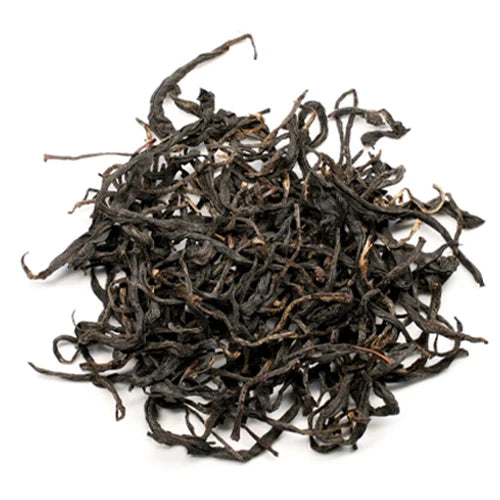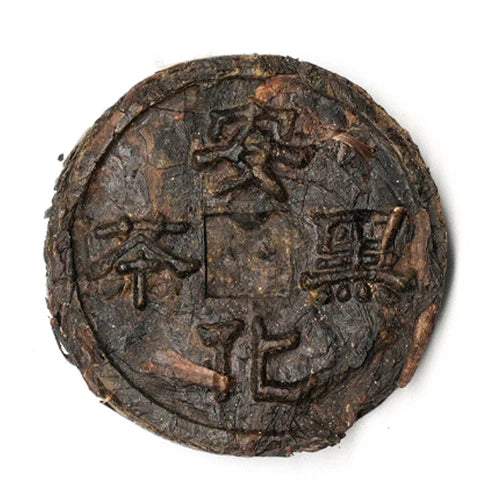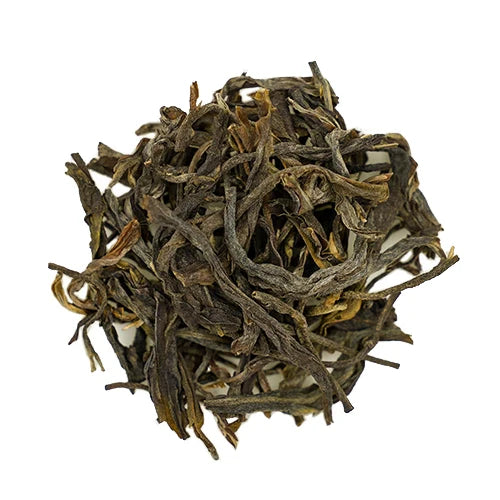
10 Best Chinese Green Tea
In China, there are many kinds of tea. Each kind of tea has its own characteristics. Green tea is the tea that everyone drinks more. Green tea also occupies a high position in the top ten famous teas in China.
iTeaworld is offering 50% off all green teas, including China’s most famous varieties like Longjing and Biluochun. Learn More>>

When you drink green tea, loose leaf tea is your best choice. This is the best way to get the full flavor of green tea into the water. Unlike loose leaf black tea which has a strong flavor, or loose leaf oolong tea which has a variety of flavors. Green tea with loose leaves is more of a "fresh" drink. Green tea is a refreshing tea.
In China, there is a rich variety of green teas to choose from. If you're interested in exploring the world of green tea, tea samplers can be an excellent way to try different flavors and discover your preferences. Here are the top ten famous green teas in China and their core production areas, making them ideal candidates for tea samplers.
Of course, we suggest that you start with the green tea selection because this way you will be able to experience multiple green teas at once to find your favorite variety. The green tea selection is available in many brands. For example, the green tea collection offered by iTeaworld loose leaf tea is a good choice.
1.West Lake Dragon Well (Longjing)

Core Production Area: Longjing Village, Hangzhou, Zhejiang.
Not all "Dragon Well tea" can be called "West Lake Dragon Well." The legally defined production areas for Dragon Well tea span 18 counties in Hangzhou, Shaoxing, Jinhua, and Taizhou. These are divided into three zones: West Lake, Qiantang, and Yuezhou. Only tea from the West Lake zone can be termed "West Lake Dragon Well"; other areas are simply called "Dragon Well tea" or "Yuezhou Dragon Well" or "Qiantang Dragon Well."
The West Lake area is further divided into first-level and second-level zones. The first-level zone includes the traditional five core areas: Shi (peak), Long (well), Yun (nest), Hu (run), and Mei (homestead). The famous "18 imperial tea bushes" gifted by Emperor Qianlong are located in the Hugong Temple on Shifeng Mountain. The second-level zone encompasses the Dragon Well produced outside of the first-level zone.
For the finest sourcing of Longjing Dragon Well tea, explore iTeaword's premium green tea selection. Our green tea selection captures the essence of China's celebrated green teas, from mellow daily drinkers to complex styles for connoisseurs. Treat yourself to the regional specialties and tea masters' creations.
2.Dongting Biluochun

Core Production Area: Dongting Mountain, Suzhou, Jiangsu.
The core production region for Biluochun is the Dongshan and Jinting towns in Wuzhong District, Suzhou. Tea trees are interplanted with peach, plum, apricot, persimmon, tangerine, ginkgo, and pomegranate trees, giving Biluochun its natural floral and fruity aroma. The unique feature of Dongting Biluochun is its early harvest; the more white fuzz it has, the better its quality.
3.Huangshan Maofeng

Core Production Area: Huangshan, Anhui.
Huangshan Maofeng is produced in the Huangshan region, Shexian, and Xiuning areas of Anhui province. The best is widely acknowledged to come from areas like Fuxi Township.
For those who appreciate rich and robust teas, we also recommend trying Da Hong Pao, a famous and highly regarded oolong tea.
4.Taiping Houkui

Core Production Area: Huangshan District, Anhui.
Taiping Houkui is the most uniquely shaped green tea, with the longest leaves. The best tea comes from the Monkey Pit in Xinming Township of Huangshan District (formerly Taiping County), which gave the tea its name. Taiping Houkui is particularly durable when brewed, with a distinct orchid aroma. Once brewed, each leaf bud stands upright.
If you enjoy the fragrant aroma of floral teas, our selection includes premium Loose Leaf Jasmine Tea.
5.Lu'an Melon Slice (Guapian)

Core Production Area: Lu'an City, Anhui.
The uniqueness of Lu'an Guapian lies in its production: no buds, no stems, made purely from tea leaves. It gets its name because it resembles melon seeds. It is primarily produced in the Dabie Mountain region of Lu'an City. High-quality Lu'an Guapian has a layer of white frost on its surface, which is a result of organic substances in the tea leaves precipitating out during the frying process. The more frost, the higher the quality.
6.Bamboo Leaf Green Tea (Zhu Ye Qing)

Core Production Area: Mount Emei, Sichuan.
Bamboo Leaf Green, also known as "Green Leaf Nectar", is renowned because of its connection to Mount Emei, a famous mountain.
Its origin is from tea gardens located between 600 and 1500 meters above sea level, such as in areas like Bai Long Dong, Hei Shui Temple, and Wan Nian Temple. Surrounded by mountains and enveloped in mist throughout the year, the tea trees here receive limited sunlight of low intensity. Consequently, the tea leaves are rich in chlorophyll and amino acids.
This premium loose leaf green tea is carefully hand-plucked and processed to yield a delicate liquor with captivating bamboo fragrance.
7.Anji White Tea

Core Production Area: Anji, Huzhou, Zhejiang.
Anji White Tea's primary production area is located in Anji County, Huzhou City, Zhejiang Province. It has become popular in recent years, and many tea novices are misled by its name, mistakenly buying it as a white tea.
What stands out about Anji White Tea is its refreshing taste, rooted in its rich content of 18 amino acids essential to the human body. With an amino acid content ranging from 5 to 10.6%, it is 3-4 times higher than regular green tea. It has fewer polyphenols than other green teas, making its taste particularly fresh without bitterness.
If you are oolong tea enthusiasts, do not miss out our TieGuanyin, a high-quality oolong tea with a unique and captivating aroma.
8.Xinyang Maojian

Core Production Area: Xinyang City, Henan.
The main production areas for Xinyang Maojian are spread across Shihe District (formerly Xinyang City), Pingqiao District (formerly Xinyang County), and Luoshan County.
The core regions for high-quality Maojian include places in Shihe District such as Che Yun Mountain, Ji Yun Mountain, Yun Wu Mountain, Tian Yun Mountain, Lian Yun Mountain, Hei Long Tan, Bai Long Tan, and He Jia Village, colloquially known as "Five Clouds, Two Ponds, One Village."
9.Enshi Yulu (Jade Dew)

Core Production Area: Enshi, Hubei.
Enshi Yulu, also known as "Jade Green," belongs to the steamed needle-shaped green tea category. Steamed green tea is one of the earliest types of tea invented in ancient China. The core production area of Enshi Yulu is in the southern part of Enshi State, including Bajiao Village and the eastern suburbs' Wufeng Mountain. It's typically harvested before the Qingming Festival and finishes before the Grain Rain. The raw material sought is a fresh leaf with a strong green color, either one bud with one leaf or one bud with two leaves.
Hubei's Enshi is known to have the world's largest selenium reserves, hence Enshi Yulu is rich in selenium, earning it the title "Selenium-rich Tea."
Japanese Yulu tea was first introduced from China.
Explore our classic tea selection, featuring a variety of green and black teas, including our carefully curated Classic tea selection.
10.Lushan Cloud and Mist Tea

Core Production Area: Lushan Scenic Area, Jiujiang, Jiangxi.
Lushan Cloud and Mist Tea dates back to the Eastern Han Dynasty and was listed as a tribute tea during the Song Dynasty.
Its primary production area lies above 800 meters in altitude, in places like Han Yang Peak, Xiao Tian Pond, and Xian Ren Cave. Due to the high elevation, vapor rises to form clouds and mist. It is foggy for up to 195 days a year, causing a delayed temperature rise. As a result, tea trees typically sprout after the Grain Rain, making the best harvest time from late April to early May.
These are the top 10 core green tea producing regions in China. All of the best loose leaf tea have their own specialties. If you can drink them all you will unlock a lot of information about green tea and thus become a green tea tasting master.
If you want to buy expensive green teas, remember to check their origin information.
I hope you enjoy these wonderful and delicious top 10 green teas from China!
If you’ve been curious to try these green teas, now’s the perfect opportunity — enjoy half off all green teas at iTeaworld’s Holiday Celebration now!
Frequently Asked Questions About Chinese Green Tea
1.What Is the History of Chinese Green Tea?
The history of Chinese green tea dates back thousands of years. It was first mentioned in medicinal texts from the 1st century AD, though some historians believe tea drinking began as early as the 10th century BC. During the Song Dynasty starting in the 10th century, tea cultivation and culture developed. Tea ceremonies emerged as an intricate part of Chinese culture. Major advancements occurred in the Ming Dynasty with the introduction of loose leaf tea and novel processing techniques. The most significant development was in the 17th century with the practice of steaming or pan-frying leaves to produce what we recognize as green tea today. Chinese green tea cultivation and traditions have continued evolving over millennia.
2.Is Chinese Green Tea Considered Acidic or Alkaline?
Chinese green tea has typically been considered mildly acidic rather than alkaline. The pH level of most Chinese green tea varieties ranges from 5-6.5, placing it on the acidic side of the pH scale, though closer to neutral. This slight acidity is due to the presence of acids like gallic acid that naturally occur in tea leaves. Is green tea acidic? Higher grade greens like Longjing and Dragonwell may have a pH as high as 6, closer to neutral. Acid in green tea comes from natural acids in the leaves. The acidity level in Chinese green tea is generally lower than in other beverages like coffee or black tea. Some research has found acid in green tea may aid digestive health. Overall, Chinese green tea offers a mildly acidic beverage compared to other more strongly acidic drinks. Is green tea alkaline or acid? Chinese green tea is mildly acidic rather than alkaline.

3.How Is Chinese Green Tea Processed?
After harvest, Chinese green tea processing aims to prevent oxidation through various methods:
●Steaming: Freshest leaves are steamed at high heat to halt enzymes promoting oxidation. This retains vibrant green color and fresh flavors.
●Pan-frying: Leaves are fried in heated pans or woks. Heat kills oxidation enzymes more gently than steaming. Used for quality greens like Dragonwell and Longjing.
●Baking: Some low-grade teas are baked at lower temperatures until dry to simplify mass production.
●Shake-firing: Twigs are dried outdoors, shaken frequently in woks over wood fires to dry evenly while preventing fermentation. Used for lower-end and scented varieties.
●Air drying: Leaves are laid out to dry indoors away from direct sunlight, which can tan leaves. This preserves nutrients but is slower than other methods.
Proper ventilation and specific durations are key to halting oxidation at the right point. Finally, dried leaves may undergo sorting by size and quality. Overall, Chinese greens are minimally processed compared to oolongs and blacks.
4.What Are the Health Benefits of Chinese Green Tea?
Chinese green tea has many potential health benefits due to its high concentration of polyphenols and catechins. Chief among them is epigallocatechin gallate (EGCG), a powerful antioxidant that can reduce the risk of heart disease and cancer. Green tea may help lower "bad" cholesterol, blood pressure, and blood sugar levels. It also contains fluoride, which strengthens tooth enamel and prevents cavities. Compounds in green tea can boost brain function and may protect against neurodegenerative diseases like Alzheimer's. Studies also suggest green tea supports weight loss by speeding up metabolism and helping burn more calories. Drinking several cups per day can help maintain overall health and wellness.
5.What Are the Best Storage Practices for Chinese Green Tea?
Proper storage is crucial to maintaining the freshness, flavor, and aroma of Chinese green tea. Here are some best storage practices for Chinese green tea:
1.Air-Tight Container:
Store Chinese green tea in an air-tight container to prevent exposure to air, which can lead to oxidation and loss of flavor. Use containers made of materials like ceramic, glass, or stainless steel.
2.Avoid Light Exposure:
Keep green tea away from direct sunlight and artificial light, as light can degrade the quality of the tea leaves. Choose opaque containers or store the tea in a dark cabinet.
3.Cool and Dry Environment:
Store green tea in a cool and dry place to prevent moisture absorption. Avoid storing it near sources of heat, such as stoves or ovens, as exposure to heat can affect the tea's freshness.
4.Avoid Strong Odors:
Green tea can easily absorb surrounding odors. Store it away from strong-smelling substances like spices, coffee, or other aromatic items to preserve its natural flavor.
5.Refrigeration for Long-Term Storage:
For long-term storage, consider refrigerating Chinese green tea. Use an airtight container or vacuum-sealed bag to protect the tea from moisture and odors. Before using refrigerated tea, allow it to return to room temperature to avoid condensation.
6.Keep Away from Moisture:
Moisture can lead to mold growth and affect the quality of the tea. Ensure that the storage environment is dry, and consider adding moisture-absorbing packets to the container to prevent excess humidity.
By following these storage practices, you can prolong the shelf life of your Chinese green tea and enjoy a consistently fresh and flavorful cup every time you brew.

6.Which Foods Pair Chinese Green Tea Perfectly?
Chinese green tea pairs well with a variety of foods, enhancing the overall dining experience with its unique flavors and aromas. Here are some foods that pair perfectly with Chinese green tea:
1.Dim Sum:
The delicate flavors of Chinese green tea complement the bite-sized portions of dim sum, creating a harmonious balance. Try pairing green tea with steamed dumplings, spring rolls, and other dim sum varieties.
2.Sushi and Sashimi:
Chinese green tea, especially a light and slightly vegetal variety, pairs well with the clean and fresh flavors of sushi and sashimi. The tea's palate-cleansing properties enhance the dining experience.
3.Seafood:
Whether it's grilled fish, shrimp, or other seafood dishes, Chinese green tea's subtle sweetness and vegetal notes complement the natural flavors of seafood without overpowering them.
4.Lightly Seasoned Poultry:
Green tea pairs well with lightly seasoned chicken or turkey dishes. The tea's freshness complements the subtle flavors of the poultry without overshadowing them.
5.Vegetable Stir-Fry:
The earthy and slightly sweet notes of Chinese green tea work well with a variety of vegetable stir-fries. The tea can balance the richness of the dish and cleanse the palate between bites.
When pairing Chinese green tea with food, it's essential to consider the tea's specific flavor profile and the intensity of the dish. Experiment with different green tea varieties to discover your preferred combinations and enhance your culinary adventures.
Connected with other tea lovers, join in Discord




































































